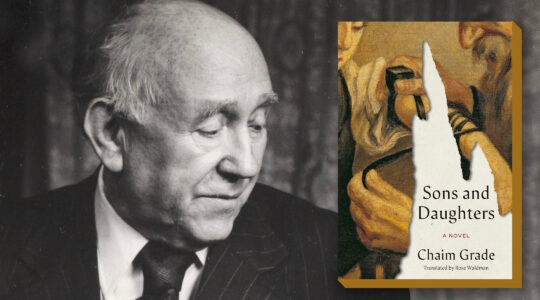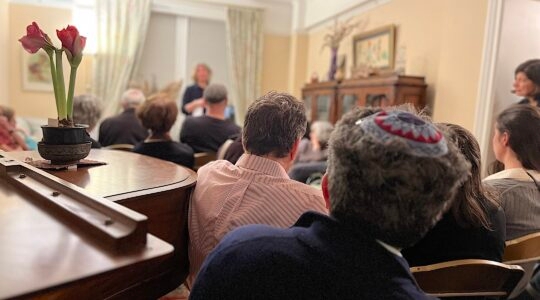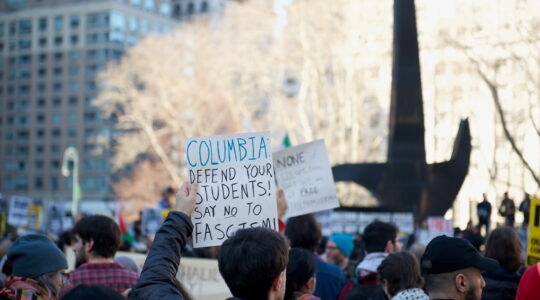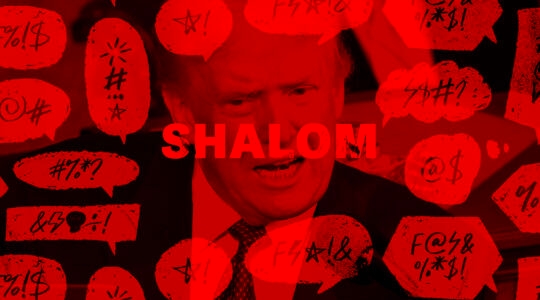NEW YORK (JTA) — After my first visit to Israel, at age 6, I proudly toted my photo album to Hebrew school for show-and-tell. As the class crowded around a picture of the Kotel, my teacher marveled, “Look how blue the sky is!”
I squinted at the picture: The sky didn’t look any bluer than the sky in Framingham, Mass., where I grew up. But I believed her. Of course, the Jerusalem sky would be bluer than anywhere else in the world.
I’m still not sure about that sky, but my teacher’s comment sums up the relationship that many American Jews have with Jerusalem. For many of us, Jerusalem has become more of a spiritual ideal than an actual place.
On June 1, many Jews will celebrate Yom Yerushalayim, or Jerusalem Day, which marks the 1967 military victory that led to Israeli control of East Jerusalem.
In the American Jewish communities that celebrate Yom Yerushalayim, the day often becomes a time for rhetoric about the perfection of Jerusalem. We may quote the ancient rabbinic claim that nine-tenths of the world’s beauty rests in Jerusalem. We speak of Jerusalem as the city of peace and as the holy city. We sing Naomi Shemer’s song, “Jerusalem of gold, of bronze, of light.”
Some of this talk reflects a conscious political attempt to close down any discussion about the status of Jerusalem in a peace agreement. Some of this talk arises from a well-intentioned desire to put aside politics and focus on Jerusalem’s religious meaning.
But nothing about Jerusalem is apolitical.
If we focus only on the holiness and beauty of the place, we unfeelingly ignore the pain of its Arab residents, low-income families, foreign workers and others whose lives there involve injustice and lost opportunity. If we focus only on the injustices committed there, we forget the religious power of Jerusalem for Jews, Muslims and Christians.
When we choose to speak about Jerusalem only in idealistic terms, we fail to grapple with the essential messiness of the actual place. In the real Jerusalem, people go to work, run errands and worry about their children. In the real Jerusalem, haredi Orthodox and secular Israelis battle over Shabbat laws and segregated bus lines. In the real Jerusalem, English speakers and well-off Israelis eat sushi in upscale cafes.
In the real Jerusalem, longtime Arab residents are evicted from the homes they have occupied for decades so that religious Jewish settlers can move to homes they have purchased in the neighborhood. In the real Jerusalem, inspiring activists and advocates devote their life to creating a better city for all residents. In the real Jerusalem, Jews, Muslims and Christians come to pray.
The disconnect between the idea of Jerusalem and the reality of the place is not a new phenomenon.
Classical Jewish texts distinguish between “Yerushalayim shel malah,” the spiritual, heavenly Jerusalem, and “Yerushalayim shel mata,” the earthly Jerusalem. In Yerushalayim shel malah, God is visible, suffering is absent and there is perfection. In Yerushalayim shel mata, real people struggle with deep political, religious and personal conflict. In Yerushalayim shel mata, perfection remains elusive.
When we speak only about the beauty and holiness of Jerusalem, we effectively act as though we already live in Yerushalayim shel malah. This approach gets in the way of our making progress in ensuring that the actual Jerusalem is a just and peaceful place.
If we are able instead to engage with Yerushalayim shel matah, in all of its messiness and complexity, we have a chance to create a better future for the city. Encountering this messiness means visiting, or at least reading about, the diverse communities living in the city. It means seeing what neighborhoods make up East Jerusalem, who lives there, and how life differs in the Arab and Jewish parts of the city. It means spending time in religious and secular communities and understanding the tensions as well as the commonalities between them. It means visiting the wealthiest and poorest neighborhoods of the city.
Jerusalem has become the primary battleground for the peace process and for internal debates about the nature of Israeli society. Jerusalem’s status in these debates is both symbolic and real.
The rabbis of the Talmud describe Jerusalem as the portal to heaven. There is, according to these texts, a direct line from Jerusalem to the Divine throne. However, these same rabbis elsewhere assert that one of the doors to “gehenom,” the underworld, also sits in Jerusalem. Jerusalem, the holiest of all cities, offers the possibility of Divine encounter. But even the ancient rabbis understood the flip side of this holiness: We can get so involved in our own religious longings that we fail to see that we are falling into unhappy territory.
This year, let’s make Yom Yerushalayim a time for real communal conversation about the messy, complicated and exciting history, reality and future of the city. If we succeed in doing so, we may move ourselves just one step closer to realizing Yerushalayim shel malah.
(Rabbi Jill Jacobs is the executive director of Rabbis for Human Rights-North America.)
JTA has documented Jewish history in real-time for over a century. Keep our journalism strong by joining us in supporting independent, award-winning reporting.





